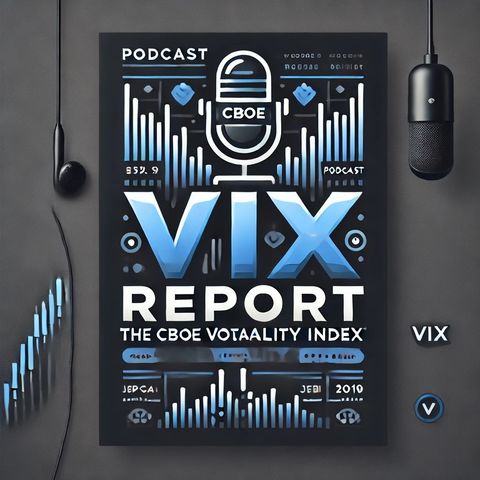Understanding the Volatility Index: Crucial Insights for Navigating Market Uncertainty

Iscriviti gratuitamente
Ascolta questo episodio e molti altri. Goditi i migliori podcast su Spreaker!
Scarica e ascolta ovunque
Scarica i tuoi episodi preferiti e goditi l'ascolto, ovunque tu sia! Iscriviti o accedi ora per ascoltare offline.
Understanding the Volatility Index: Crucial Insights for Navigating Market Uncertainty
Questa è una trascrizione generata automaticamente. Si prega di notare che non è garantita la completa accuratezza.
Descrizione
The Cboe Volatility Index (VIX) is a critical measure of market sentiment and future volatility expectations for the S&P 500 Index (SPX). Despite the lack of real-time updates on the...
mostra di più**Current VIX Index Value and Percent Change**
To obtain the latest VIX Index value and its percent change, it's advised to consult up-to-date financial news websites or the Cboe website. The VIX Index provides a real-time gauge of expected 30-day volatility of the S&P 500 based on SPX options prices. The percent change signifies how much the VIX has increased or decreased since the last reported value, reflecting market dynamics.
**Underlying Factors for Percent Change**
Several key factors drive the percent change in the VIX Index:
1. **Market Sentiment**: Often referred to as the "fear index," the VIX reflects investors' consensus on future market volatility. A rising VIX suggests greater market uncertainty and fear, while a falling VIX indicates lower uncertainty and more stable market conditions.
2. **Economic and Geopolitical Events**: Events like economic data releases and geopolitical tensions significantly influence the VIX. Positive economic developments typically lower the VIX, whereas negative news or heightened geopolitical risks tend to increase it.
3. **Options Pricing**: The VIX calculation is based on SPX options prices. Changes in the implied volatility of these options directly affect the VIX level. Higher implied volatility in option prices will push the VIX higher and vice versa.
4. **Hedging and Speculation**: Market participants often use VIX futures and options to hedge against market declines or to speculate on future volatility. Increased demand for these hedging instruments can drive up the VIX level.
**Trends**
The VIX Index exhibits several noteworthy trends and characteristics:
1. **Inverse Relationship with S&P 500**: Historically, the VIX has shown an inverse relationship with the S&P 500 Index. When the S&P 500 rises, the VIX tends to fall, indicating lower expected volatility. Conversely, when the S&P 500 falls, the VIX usually rises, indicating higher expected volatility.
2. **Mean Reversion**: Volatility measured by the VIX tends to mean-revert. Periods of high volatility are generally followed by periods of lower volatility and
Informazioni
| Autore | QP-1 |
| Organizzazione | William Corbin |
| Sito | - |
| Tag |
Copyright 2024 - Spreaker Inc. an iHeartMedia Company
